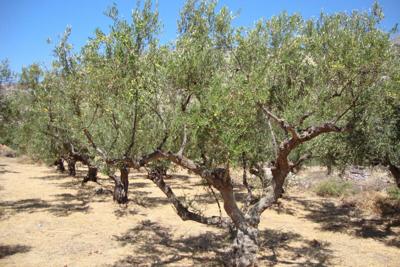Francisco José García de Zúñiga oversees his olive tree fields during harvest, grappling with the challenges posed by consecutive years of drought in 2022 and 2023.

His land, located in Jaén, the primary hub of Spanish olive oil production, echoes the struggles faced by the nation, the largest global olive oil producer, covering 70% of European Union consumption and 45% worldwide.
The impact of the persistent drought in Jaén and other olive-producing regions across Spain is substantial, affecting both the quantity of oil produced and its market price. García de Zúñiga underscores the interconnectedness of Spain’s challenges with global production dynamics. The reduction in Spain’s olive oil output leads to a decrease in the world supply, triggering a rise in prices due to the unaltered demand—a manifestation of the fundamental law of supply and demand.
In Spain, the surge in olive oil prices has been drastic, escalating by more than 70% in the current year alone following a significant increase in 2022. A one-liter bottle of extra virgin oil now commands approximately €9 in low-budget supermarkets. While there has been a slight market price drop in recent weeks, it offers only marginal relief to consumers.
The Nuestra Señora del Pilar cooperative, a pivotal entity through which hundreds of Jaén olive farmers produce their oil, faced a dire situation during the 2022-23 season, harvesting a mere 24 million kilos of olives, one of the lowest figures on record. Even in the current year, the cooperative estimates a total harvest of 30-35 million kilos, significantly below the average.
Cristóbal Gallego Martínez, the cooperative’s president, attributes the escalation in olive oil prices to increased costs of fuel, electricity, and fertilizers over the past two years. However, he identifies the lack of rain as the predominant factor affecting olive production. Climate change has disrupted traditional agricultural assumptions, particularly in the Mediterranean region, where temperatures are rising 20% faster than the global average.
To mitigate the impact of changing weather patterns, regions like Andalusia in the south have implemented measures to reduce water use. Mr. Gallego Martínez advocates for proactive steps from national and local governments, urging investments in irrigation systems to counteract the growing challenges posed by prolonged periods of both drought and rain.
The repercussions of rising olive oil prices are not confined to Spain but have reverberated across Europe. While the price increase has been significant, some neighboring countries have experienced a less pronounced surge. Notably, a recent trend has seen Spaniards near Portugal crossing the border to avail themselves of slightly cheaper olive oil—a testament to the far-reaching consequences of Spain’s olive industry challenges on regional markets.
In the face of climate change and its impacts on olive oil production, the need for adaptive measures, sustainable practices, and international cooperation becomes increasingly urgent. The delicate balance between environmental factors, agricultural practices, and market dynamics underscores the complexity of ensuring a stable and resilient olive oil industry.






